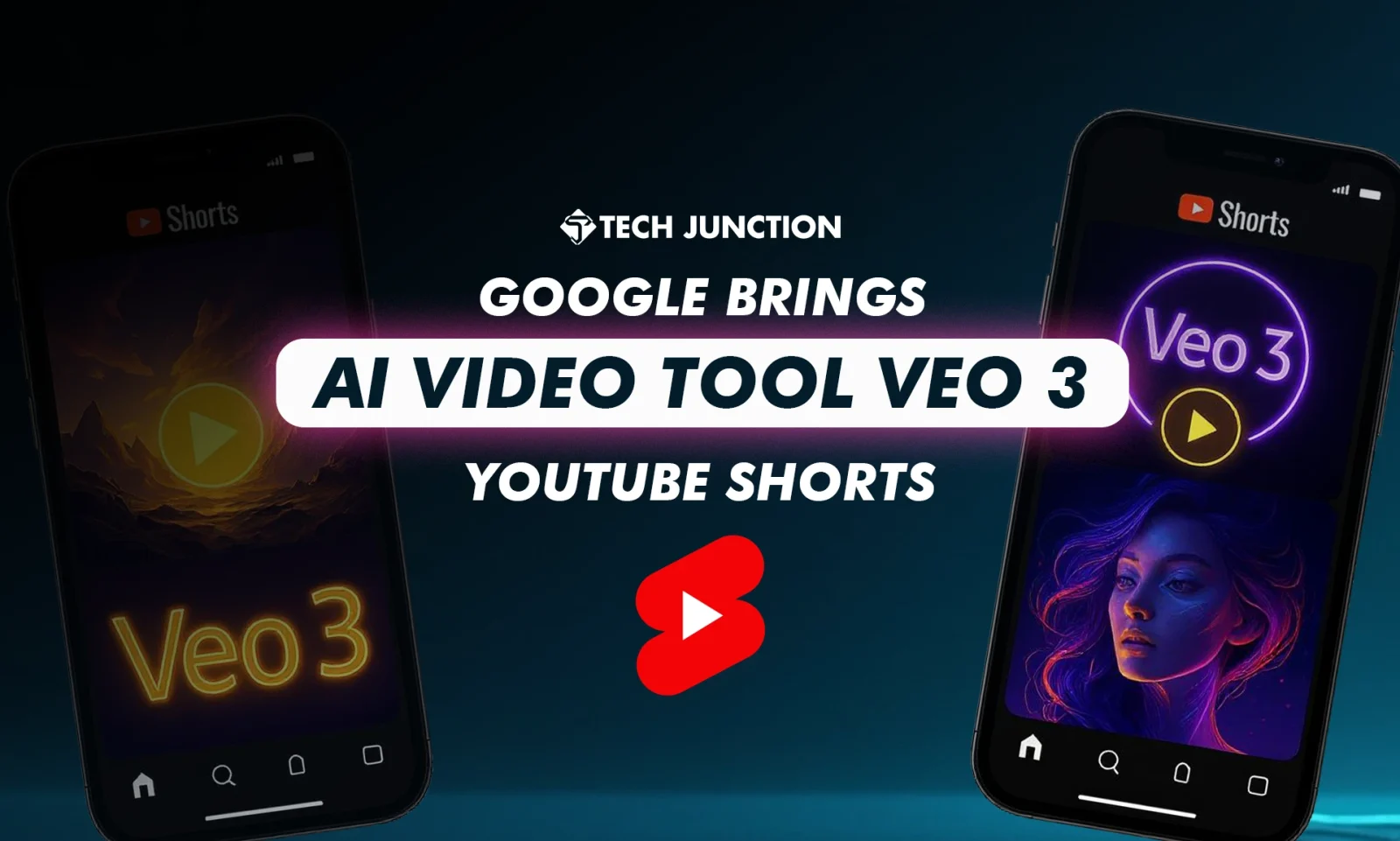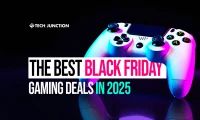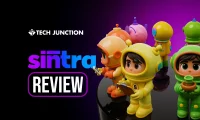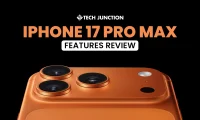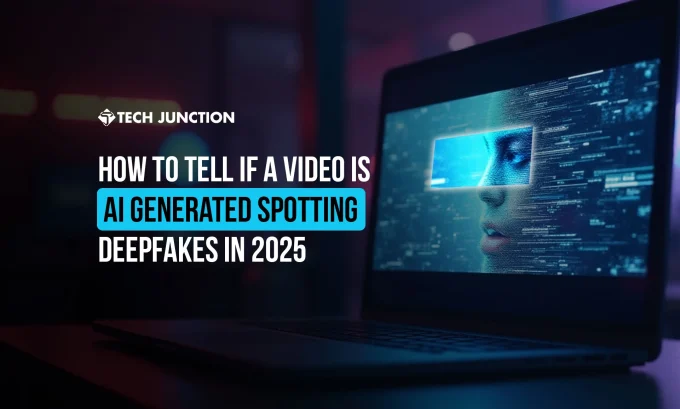Google says it will demonetize fully AI-generated videos. At the same time, it launches Veo 3 to create them. Now you can make a YouTube Short by typing an idea. Google’s new video AI tool, Veo 3, promises exactly that. It is integrated into YouTube Shorts. It turns a simple prompt into a video clip. This shift could change how Shorts are made. YouTube Shorts sees over 200 billion views daily. Veo 3 could fill that feed with AI-generated videos.
Meet Veo 3: Google’s AI Video Generator for Shorts
Veo 3 is Google’s latest video AI generator designed to create short videos from simple text prompts. It’s an AI video creator that can produce both visuals and matching audio on its own. In other words, Veo 3 can take a few lines of text and turn them into a complete short-form video clip with scenery, characters, sound effects, and even dialogue.
This Google video AI tool will be integrated into YouTube Shorts which will make it easy for the creators to generate content without a camera or editing software. YouTube’s CEO Neal Mohan announced that Veo 3 will be coming to Shorts in the summer of 2025. He described it as a way to empower anyone to tell stories and build a brand using only their voice and ideas.
In short, Veo 3 is essentially an AI that makes YouTube Shorts for you from a simple prompt.
How Does Veo 3 Work?
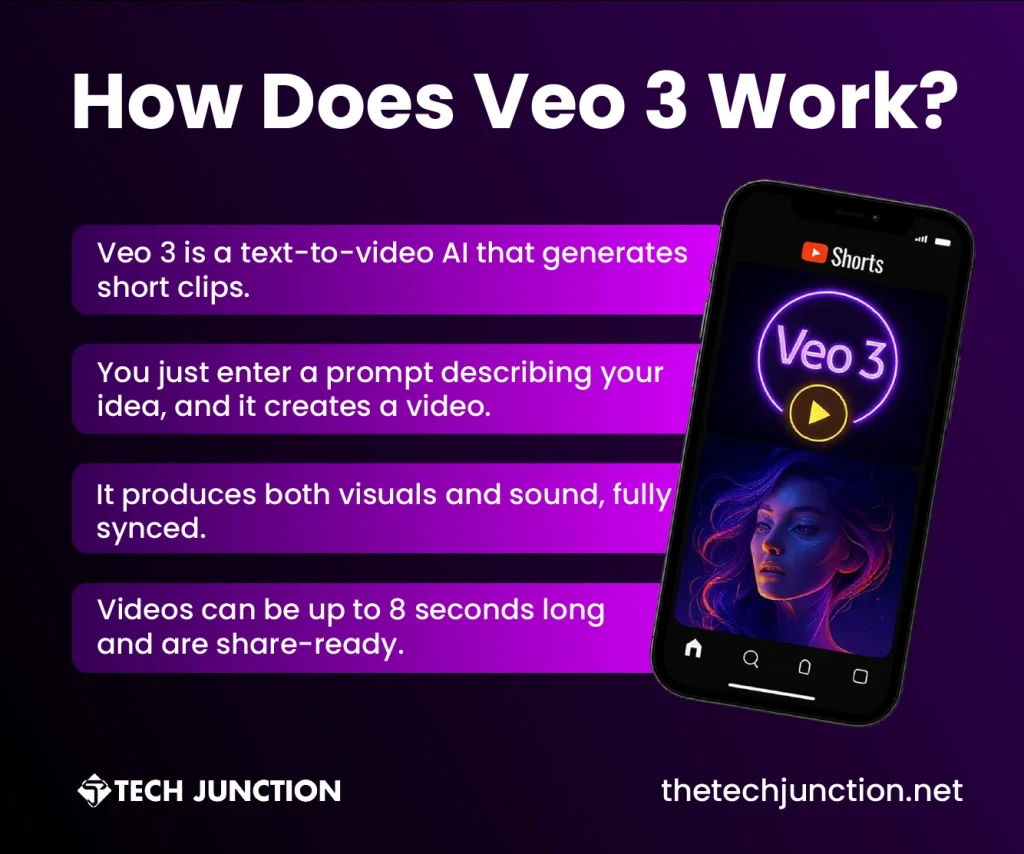
Veo 3 is a text-to-video AI model that generates short videos based on your description. Creators will be able to enter a prompt describing a scene or idea, and Veo 3 will automatically create an AI-generated video clip. This isn’t limited to visuals – Veo 3 also generates the sound to go with the video.
For example, if you prompt it with “a cat singing opera on a rooftop”, the AI might produce a short video of a cat performing, along with operatic music or meows as audio. Google’s DeepMind division calls this “emerging from the silent era of video generation,” since earlier AI video tools were mute. Veo 3 understands the video it creates at the pixel level and adds matching sound effects or dialogue at the right moments. This ability to sync audio and visuals is what makes Veo 3 AI unique as compared to other tools available.
It creates up to 8-second videos with native sound and bring simple prompts to life in short, shareable clips. In practice, using Veo 3 on Shorts could be as simple as typing an idea and letting the AI video maker produce a clip ready to post.
New Creative Tools: From Images to AI Video Shorts
Google has been building up to Veo 3 with earlier AI tools for Shorts. Last year YouTube introduced a feature called Dream Screen, which allowed creators to generate backgrounds and simple animated scenes for Shorts using AI. In mid-2025, YouTube rolled out Photo-to-Video, an AI image to video feature that turns a still picture from your phone into a 6-second video.
For example, you could upload a landscape photo and the tool would animate it with moving clouds or a zoom effect. These features (along with fun generative AI effects like turning doodles into artwork or selfies into fantasy scenes) are powered by Google’s Veo 2 model. Veo 2 is the previous generation AI video generator that handles visuals. All of these tools are accessible in YouTube’s new AI Playground, found by tapping the Create button and then the ✨ (sparkle) icon in the Shorts camera. They come with clear labels and invisible watermarks to indicate the content is AI-generated.
Now Google is taking the next step: Veo 3 will build on these capabilities and go further. Unlike Dream Screen or Photo-to-Video, which had limited scope, Veo 3 can generate full video scenes with both imagery and sound from just a text prompt. It’s a leap from simple shorts YT effects to fully AI-generated Shorts content.
Veo 3: The AI Video Maker for YouTube Shorts
The integration of Veo 3 essentially brings YouTube Shorts automation to content creation. With this tool, producing a video becomes faster and more accessible. You no longer need to film footage or record audio; the AI handles it. This democratizes video creation on Shorts by lowering the barrier to entry.
New creators or small businesses can quickly create AI video content by typing out their ideas. For example, a cafe owner could describe their new dessert in a prompt and get a short, quirky ad video generated for them. Google Veo 3 acts as a creative assistant, doing the heavy lifting of production. This means anyone with an idea can make a Shorts clip without special skills. As a result, we could see a surge in creative output.
People might use Veo 3 to spin up mini skits, music videos, or product showcases on the fly. Brands are also eyeing this technology – it can help them produce targeted, engaging ads for Shorts without big budgets or studios. Google pitched Veo 3 as a way for “anyone with a voice” to reach an audience and build their presence. In essence, it’s an AI video creator that does the work for you. This level of automation can save time and open the door for more diverse content on Shorts.
Opportunities and Challenges for Creators
Veo 3 offers exciting opportunities but also raises questions for creators. On one hand, it gives creators a powerful new tool. Even those with no filming equipment or editing experience can now make eye-catching Shorts. This could lead to a wave of fresh voices and styles on the platform.
AI Video Tools Help Creators Do More
Creators can use Veo 3 to quickly prototype ideas or add variety to their channel. For instance, a travel vlogger could use AI to visualize a destination they haven’t visited yet. AI-generated video clips might help creators fill gaps in content or experiment with storytelling. Moreover, Shorts are booming – they now average more than 200 billion views per day. So there is a huge audience to reach. More than 25% of YouTube’s Partner Program creators are already earning money from Shorts. With Veo 3, new creators might join those ranks by pumping out content quickly.
Will Human Creators Get Buried?
On the other hand, some traditional creators feel uneasy. If Shorts gets flooded with AI-made videos, it could become harder for human creators to stand out. There is a concern that audiences might scroll through endless AI clips (some of which might be low-quality or repetitive) – a phenomenon critics jokingly call “AI slop”.
Talented filmmakers or comedians on Shorts might see their original content buried under a wave of auto-generated videos. In the worst case, frustrated creators could leave the platform. The creator dilemma is real: Veo 3 can increase creativity, but it also intensifies competition. To adapt, human creators may need to focus on what AI cannot easily replicate, like personal experiences, authenticity, and unique perspectives.
They might start using AI tools like Veo 3 as part of their workflow (for brainstorming visuals or effects), while still adding a personal touch that sets their content apart. The hope is that Veo 3 becomes a collaborator for creators, not a replacement. But it’s a fine balance, and how this plays out will depend on how creators and viewers respond over time.
Quality, Originality, and “AI Slop” Concerns
Whenever AI content generation ramps up, concerns about quality and authenticity follow. As Veo 3 will enable mass production of short videos, some worry that the Shorts feed could be overrun with low-effort, auto-generated clips. As we all know, not every AI-created video will be good – some might feel generic or odd.
Critics have warned of an incoming flood of “AI slop” cluttering user’s feeds. There are also deeper concerns. It may be possible that AI might be used to create misleading videos or deepfakes, where someone’s likeness is used without permission. A tool as powerful as Veo 3 could be misused to generate fake news clips or imitate public figures. Additionally, if many Shorts look and sound AI-made, viewers might start to question what’s real and what’s not.
The lack of human creativity in some AI videos could lead to a monotonous stream of content and reduce the overall appeal of Shorts. A study commissioned by the Animation Guild (a union for Hollywood artists) estimated that over 100,000 film and animation jobs will be disrupted by AI by 2026. This highlights why many artists and creators are wary.
They fear that AI-generated media could upend their industries and devalue original human-made work. In the context of YouTube, if AI-generated Shorts become rampant, the platform will need to make sure that creativity and originality do not get lost.
How YouTube Is Keeping AI Content Safe and Transparent
YouTube is aware of the risks and is taking steps to balance innovation with authenticity. First, the platform is implementing clear labeling for AI generated content. All videos made with tools like Veo 3 will be marked to show they were created by AI. In fact, Google uses a technology called SynthID (developed by its DeepMind team) to embed invisible watermarks into each frame of AI-generated videos. These watermarks can’t be seen by viewers, but they act like a digital signature and they will allow platforms to detect AI content even if it’s reposted or edited. In addition to watermarks, YouTube will display visible labels or disclaimers so that viewers know when a Short is AI-created. This transparency is meant to maintain trust.
YouTube is also working on tools to prevent misuse of AI video. Neal Mohan mentioned that they are developing a “likeness protection” feature in collaboration with the Creative Artists Agency (CAA). This tool would help safeguard public figures from having their image or voice cloned in Shorts without permission. It’s essentially a shield against deepfake scenarios on the platform. Beyond that, Google says it has conducted extensive red-teaming and safety testing on Veo 3 to reduce harmful outputs.
The model has certain guardrails for example, it may refuse prompts that violate YouTube’s policies or produce disallowed content. Google has indicated that Veo 3’s training likely involved a lot of video data (YouTube’s vast library is a strong possibility), but they are keeping the exact details private. They have, however, emphasized that user feedback will be important.
As these AI features roll out, YouTube will listen to what creators and viewers report and fine-tune the system accordingly. The goal is to use AI innovation like Veo 3 while keeping Shorts a safe, authentic space for content.
The Road Ahead: AI’s Growing Role in YouTube Shorts
Google’s integration of Veo 3 into YouTube Shorts marks a turning point for the platform. It signals that AI generated videos are moving into the mainstream of content creation. With Veo 3, YouTube (YT) Shorts becomes one of the first major social platforms to offer built-in AI video generation for the masses. This could unlock a wave of creativity through automation.
We might see entirely new genres of Shorts made possible by AI’s imagination. Surreal mini-movies and interactive storytelling where viewers suggest prompts. YouTube’s challenge will be to foster this innovation without losing the human touch that made the platform successful. Even as AI tools grow more advanced, YouTube insists that creators’ unique creativity remains the core. As the YouTube team put it, these tools are here to make creating easier and more fun, but your original ideas and personality are what make a Short truly shine.
For viewers, the coming months will show how AI-generated Shorts are received. If done well, they could be entertaining and engaging in new ways. If overdone, the novelty might wear off fast. YouTube will need to walk a fine line between innovation and authenticity.
The company is likely to refine the algorithms, improve content filters, and maybe set guidelines on AI content frequency to keep the Shorts feed enjoyable. Other tech players are also pushing into generative video, like startups like Runway and tech giants like Meta and OpenAI.
Google’s advantage with Veo 3 is the integration of audio and its deep YouTube ecosystem. It’s clear that AI video generators will play a big role in the future of online video. With Veo 3’s launch, YouTube Shorts is at the forefront of that trend.
Conclusion
Google’s Veo 3 brings cutting-edge AI video generation directly into the hands of creators on YouTube Shorts. It offers exciting creative possibilities and the promise of faster, easier content creation. At the same time, it raises important questions about originality and quality in an era of AI-generated video.
As Veo 3 rolls out on Shorts, users and creators alike will be watching closely. This experiment could redefine what it means to be a content creator when AI video maker tools become part of the creative process. One thing is certain: the Shorts of tomorrow will be shaped by both human imagination and AI innovation working hand in hand, and that future is just a few clicks away.
The Tech Junction is the ultimate hub for all things technology. Whether you’re a tech enthusiast or simply curious about the ever-evolving world of technology, this is your go-to portal.

